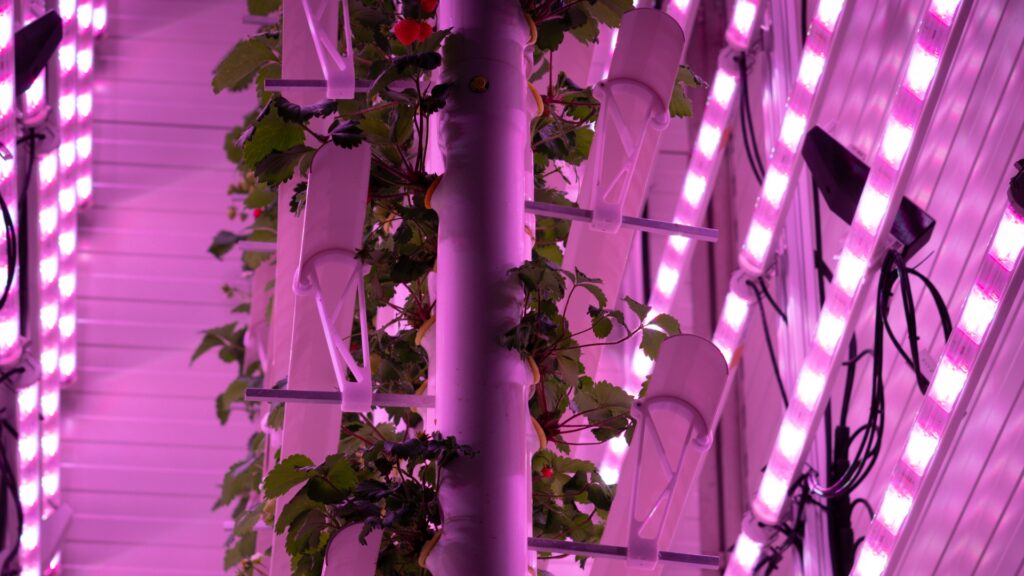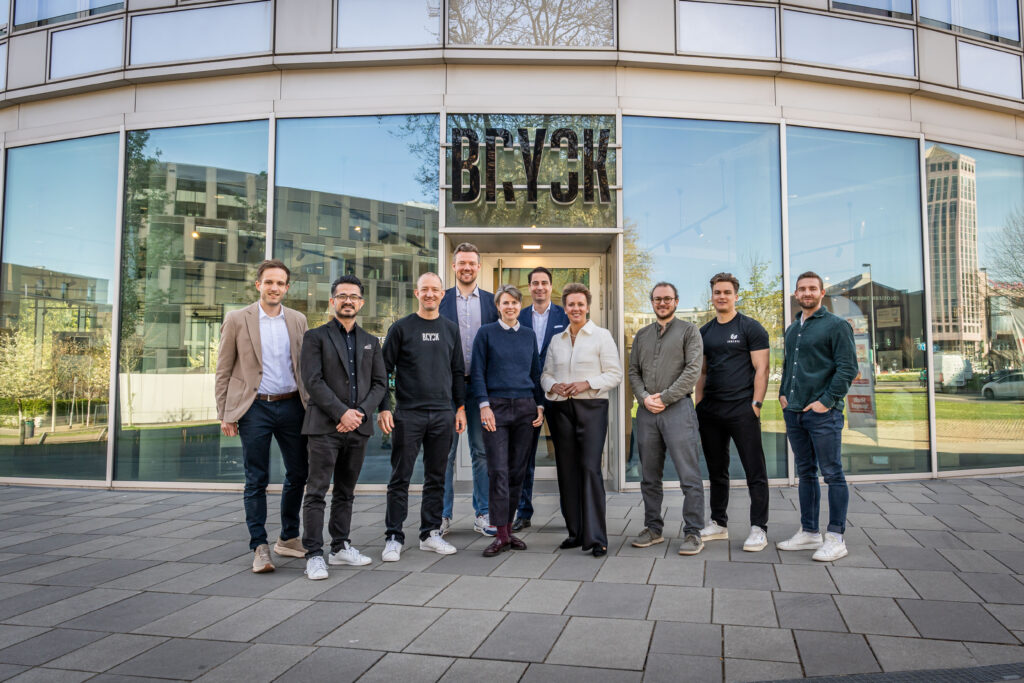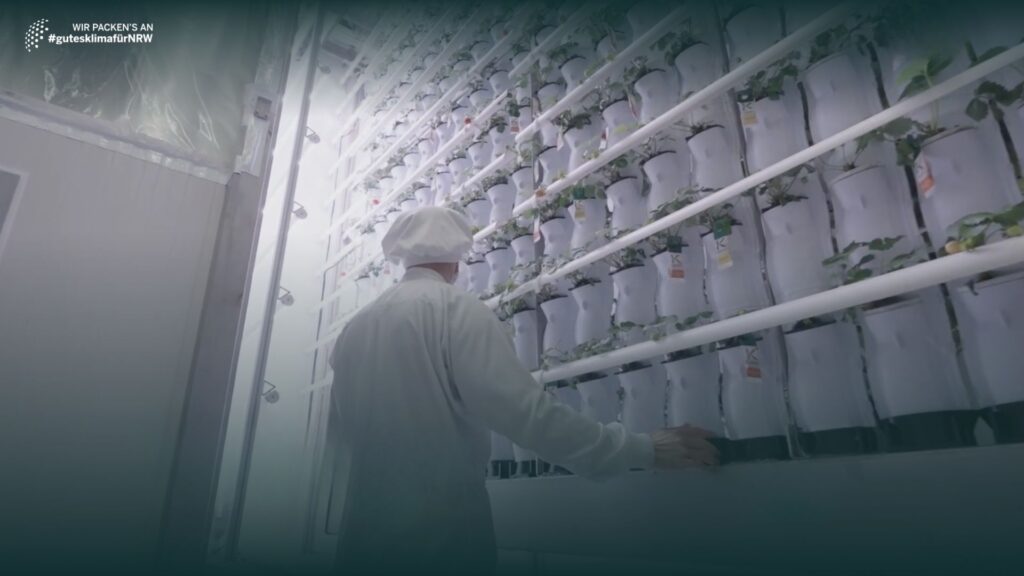The concept of vertical farming is becoming increasingly popular in new food production systems. Various companies and start-ups around the world are researching innovative cultivation methods to grow fruits and vegetables in a resource-efficient way and complement traditional farming.
Strawberry vertical farming, which involves growing strawberries vertically indoors, is gaining particular traction. In this article, we will discover why much of this research is centered around hydroponic strawberries, whether those strawberries are truly healthy and tasty, and how vertical strawberry farms operate.
Table of contents:
- The Origins of Vertical Farming
- Why Is There So Much Interest in Growing Strawberries Vertically?
- The Cultivation Options for Strawberries in Vertical Farms
- How Do Hydroponic Strawberries Taste?
- Advantages of Vertical Strawberry Farming
- Traditional and Vertical Strawberry Cultivation – A Contraction?
- Conclusion
The Origins of Vertical Farming
Vertical farming is a concept that was developed in 1999 by Dickson Despommier, a professor at Columbia University in New York City, along with his students. However, its origins go way back to the American geologist Gilbert Ellis Bailey, who in 1915 envisioned vertical farms as a form of roof farming.
Since then, there has been significant interest in growing salads and herbs in vertical farms, but in recent years, cultivating strawberries vertically has also gained popularity. Why is that?
Why Is There So Much Interest in Growing Strawberries Vertically?
Strawberries are among the most popular fruits worldwide. They contain more vitamin C than citrus fruits, are rich in calcium, magnesium, and potassium, and have immune-boosting and antioxidant effects due to their polyphenol content. Germany is one of the leading strawberry-growing countries in Europe, making it an ideal location for vGreens’ data-driven vertical strawberry farms.
But strawberries are not only exceptionally popular and healthy for consumers but for several reasons also particularly well-suited for vertical farming:
- In the controlled environment of a vertical farm, strawberries can be cultivated with a high sugar content (Brix level) and enhanced flavor. As a result, the strawberries taste exceptionally good – regardless of external factors like adverse weather conditions.
- Additionally, strawberries grown in a vertical farm are often slightly larger than conventional ones, making them more appealing to consumers.
- Due to the independence from external factors, vertical farms can achieve more than seven harvest cycles per year, leading to significantly higher yields.
- Vertical farming is also resource- and space-efficient. For example, our vGreens vertical strawberry farms require 99% less land compared to traditional strawberry farming, and water consumption can be reduced by up to 95%.
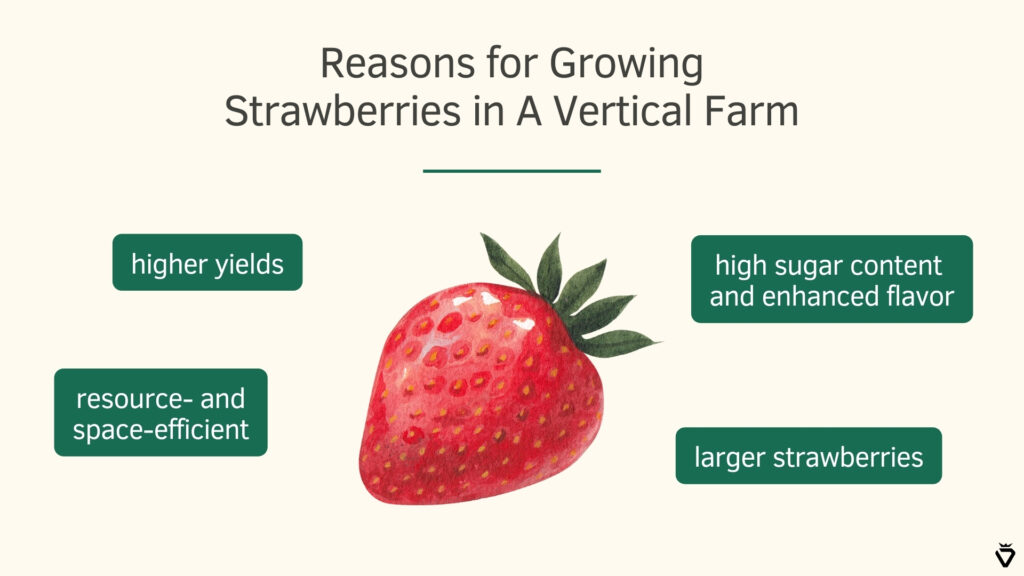
The Cultivation Options for Strawberries in Vertical Farms
In principle, there are three different methods for growing strawberries – or other produce – vertically: aeroponics, aquaponics and hydroponics.
Aeroponics: Soil-Free Cultivation Using Nutrient Mists
In aeroponics, the roots of the strawberry plants hang freely in the air and are regularly sprayed with a nutrient-rich solution. This method provides excellent oxygenation to the roots, enables rapid plant growth, and reduces water consumption. Since no substrate is required, the plants can be packed closely together, further optimizing space usage.
Aquaponics: A Symbiotic Relationship Between Fish and Plants
Aquaponics combines the cultivation option of hydroponics with aquaculture (fish farming). Fish are raised in special tanks, producing ammonia-rich waste that serves as nutrients for the strawberry plants. The nutrient-rich water is pumped into the growing beds, where the strawberries then use these nutrients. The plants, in turn, purify the water, which is then recirculated back to the fish. This method is highly efficient, forming a closed cycle that allows for the cultivation of both plants and fish.
Hydroponics: Soil-Free Cultivation Using Nutrient Solutions
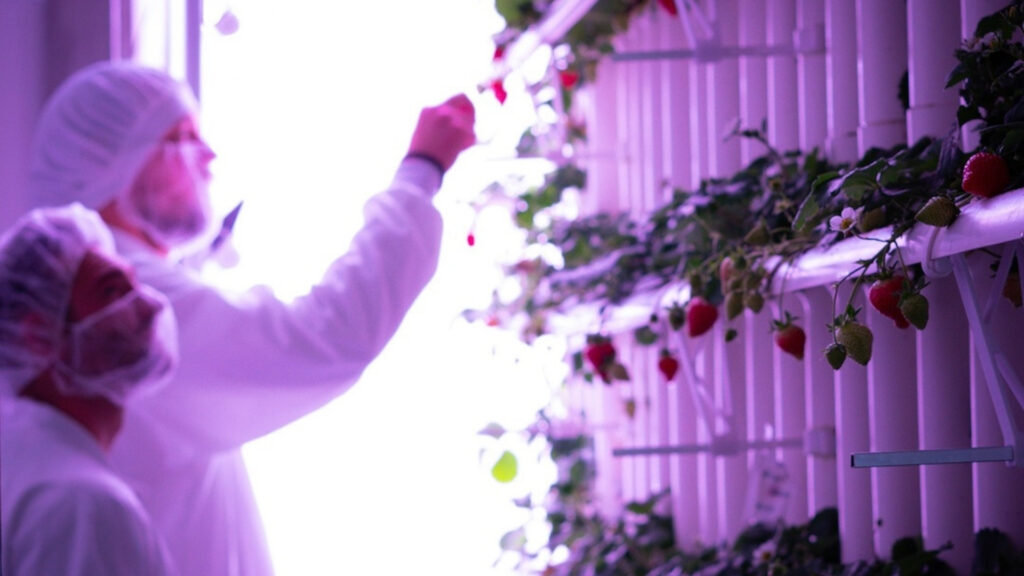
Hydroponics is one of the most common methods for vertical strawberry farms – we at vGreens, for example, use a hydroponics-derived method in our automated vertical farms. In hydroponics, strawberry plants are grown in a nutrient-rich solution without soil. This ensures that the plants receive nutrients directly, maximizing cultivation efficiency.
There are various hydroponic systems in which strawberry plants can grow, including:
- Nutrient Film Technique (NFT): With this method, a thin film of nutrient solution continuously flows through shallow channels where the strawberries grow. The plant roots absorb the nutrients directly from the water while receiving adequate oxygen.
- Deep Water Culture (DWC): Here, the strawberry plants grow on floating platforms suspended in a nutrient-rich water basin. The roots hang directly in the water, which is regularly aerated to ensure adequate oxygen supply.
- Drip System: In this method, strawberries are grown in a substrate (such as coconut fibers or rock wool), and the nutrient solution is delivered directly to the roots via a drip system.
How Do Hydroponic Strawberries Taste?
Are hydroponic strawberries sweet? And are hydroponic strawberries healthy? These are two of the questions many people have in mind when it comes to vertical strawberry farming – and rightfully so! At first, it may seem strange that fruits typically grown in open fields could be cultivated on shelves in a production facility.
The Healthier Strawberry
In reality, vertical farming makes it possible to grow strawberries that are both sweet and healthy. The positive nutrients and vitamins found in strawberries are fully retained in vertical farming. Since the controlled environment in a vertical farm eliminates the need for pesticides and fertilizers, the fruit is even healthier for consumers. This is a significant advantage, as pesticides and fertilizers pose risks to humans, workers, and the environment alike.
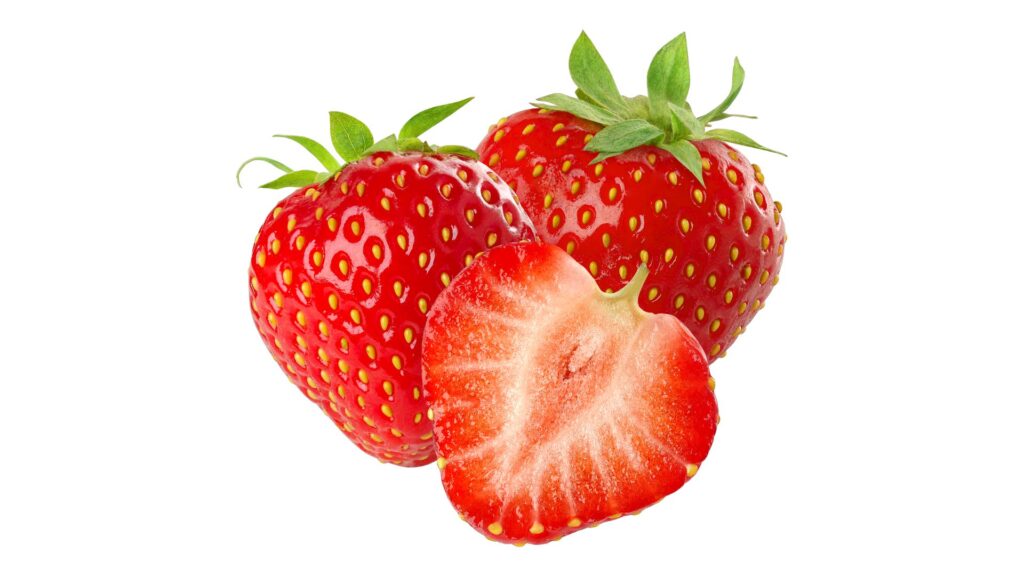
The Sweeter Strawberry
Moreover, strawberries from vertical farms are particularly sweet. This is because the sugar content, the so-called Brix level, can be individually adjusted. The Brix level measures the sugar content in liquids and indicates how much sugar is dissolved in a solution. A higher Brix level generally means a sweeter taste, which is a key quality characteristic for strawberries.
For strawberries, the average Brix level is around nine, as shown in Dutch field trials. However, ideally, the Brix level of a strawberry could be twice as high, making it even sweeter. A good Brix level for strawberries is around 16, while an excellent level is 18 – significantly higher than the average Brix value in the trails. Vertical farming allows individual adjustments to achieve this, with the Brix level even customizable by region, as there are indications that people from different nations prefer varying levels of sweetness in their fruits.
Advantages of Vertical Strawberry Farming
Specifically, vertical strawberry farming offers several advantages over traditional agriculture:
- Year-round production due to independence from seasons and weather conditions.
- Significantly reduced land usage, requiring up to 99% less space.
- Drastically lower water consumption, with up to 95% less water needed.
- Complete elimination of pesticides and fertilizers.
- Higher yields due to multiple harvests per year.
- Better quality control, high sugar content, and sweetness due to controlled conditions.
- Shorter transportation distances thanks to the possibility of urban production.
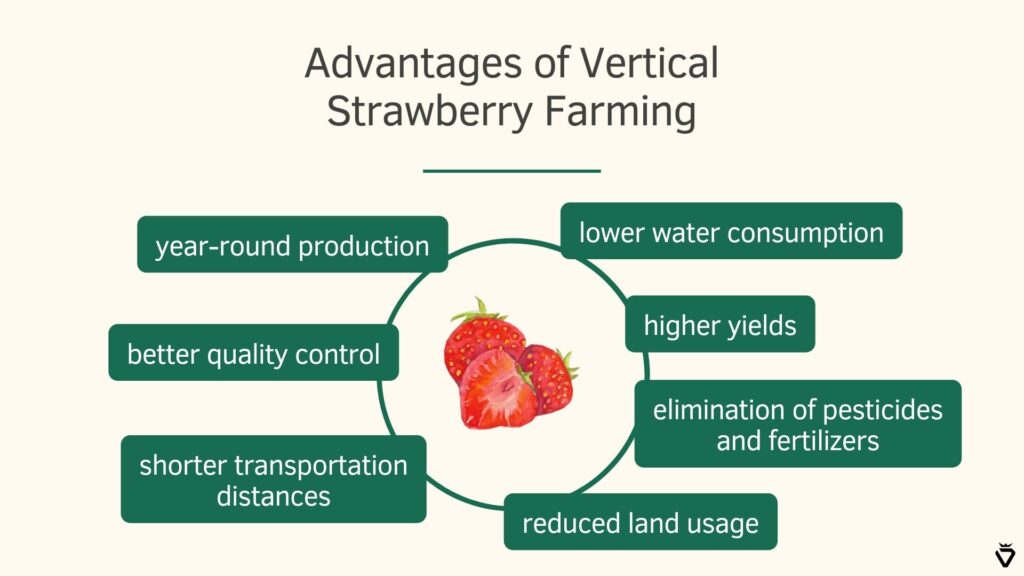
Traditional and Vertical Strawberry Cultivation – A Contradiction?
Despite these advantages of vertical farming, one thing is clear: vertical farming won’t feed the world (especially not with strawberries). At vGreens, we recognize the importance of developing alternative farming methods to continue feeding the world today and tomorrow. However, for us, the discussion between traditional and modern agriculture is not an either-or situation – it’s about combination.
In the end, vertical farming is an essential building block that can revolutionize our food system by ensuring a constant supply of nutrient-rich products. As the global population is expected to reach approximately 10 billion people by 2050, our current dietary habits will not keep up. So, it is clear that we need a change – and both traditional and modern agriculture will play a crucial role in this transformation.
Conclusion
Vertical farming, particularly the cultivation of strawberries, represents a significant progress in new food production systems. By growing strawberries in controlled indoor environments, a vertical farm can produce fruit with higher sweetness, larger size, and consistent quality, all while using significantly fewer resources than traditional farming methods. This innovative approach not only offers a sustainable solution to meet the growing demand for fresh produce but also opens up new possibilities for urban agriculture. While strawberry vertical farming may not replace traditional agriculture, it serves as a vital complement, helping to ensure a more resilient and efficient food system for the future.



